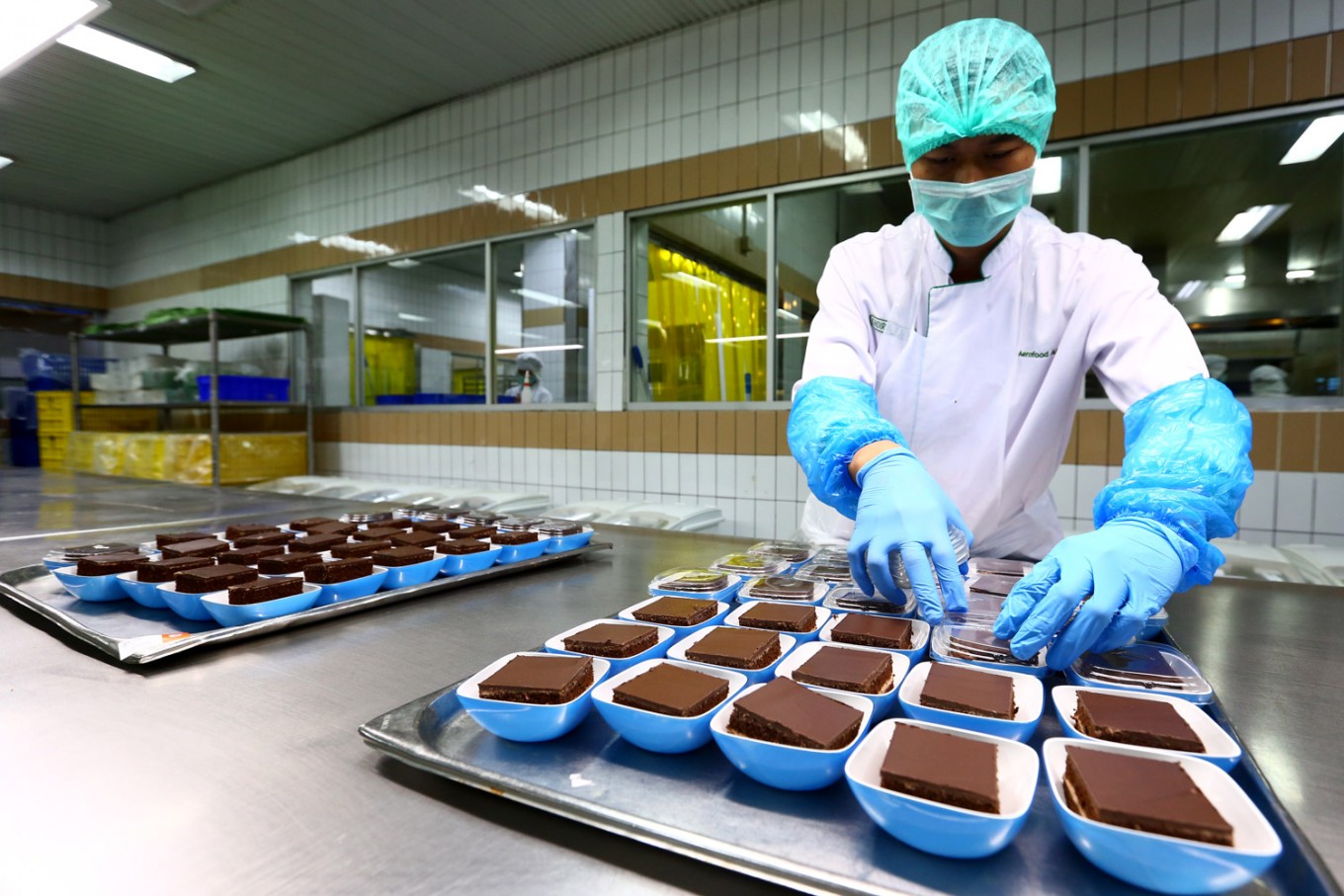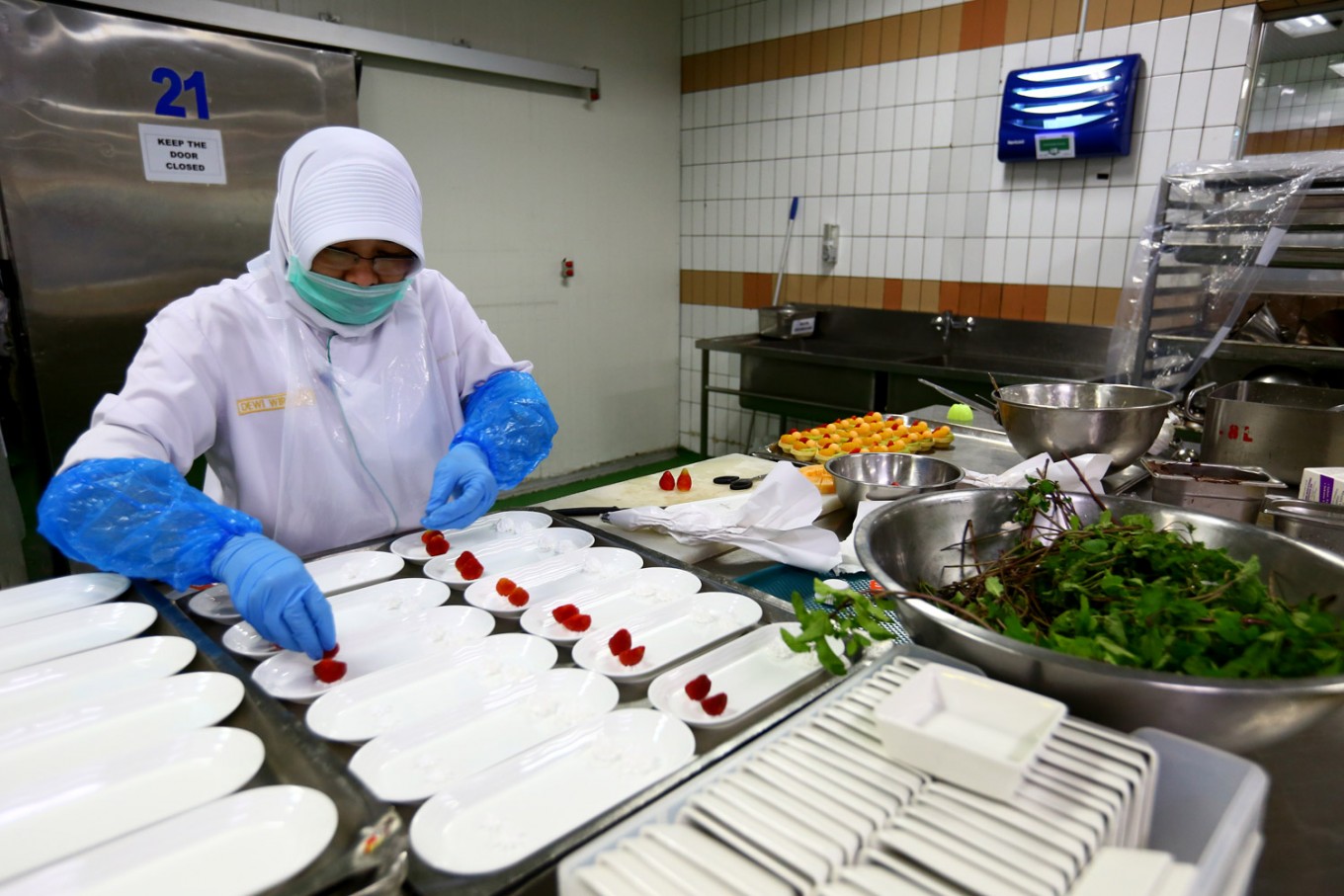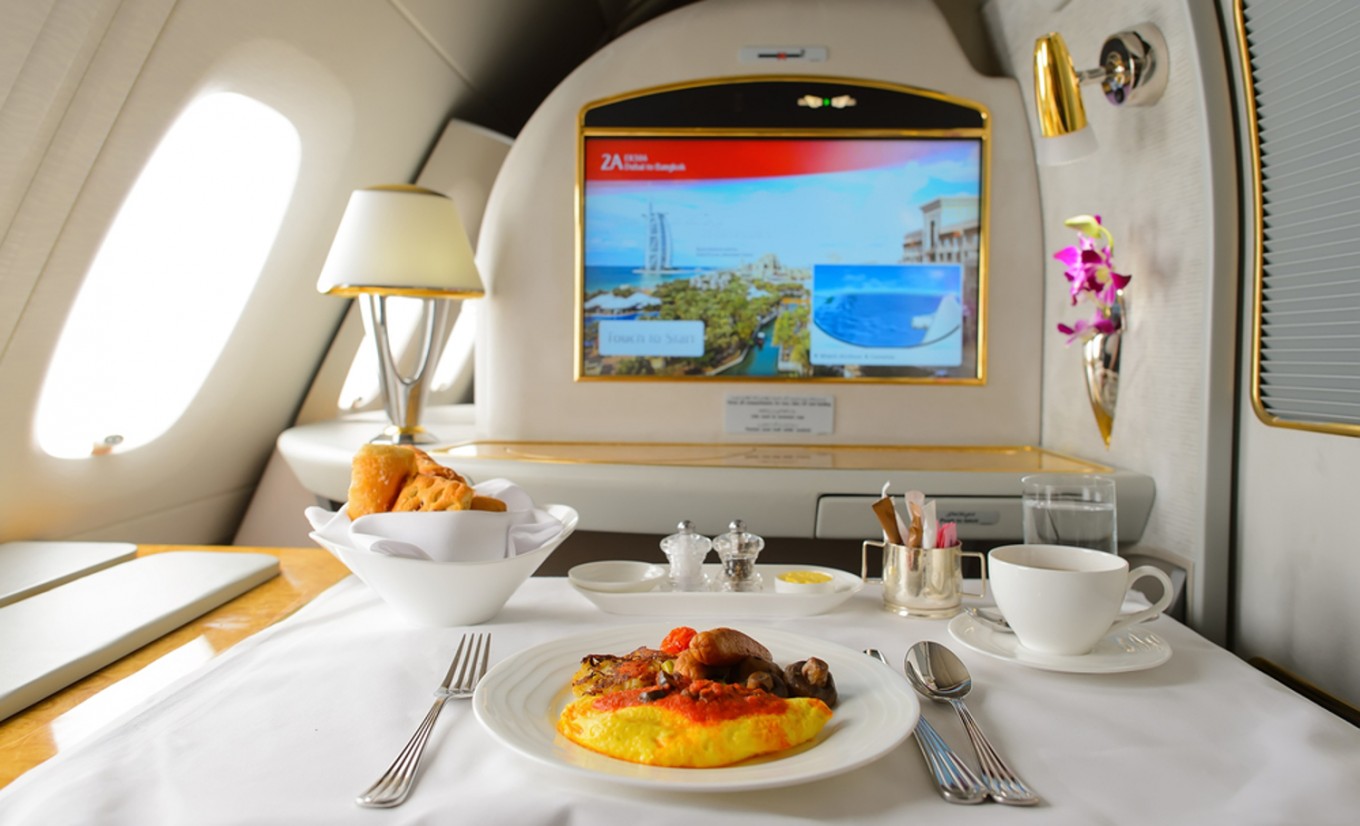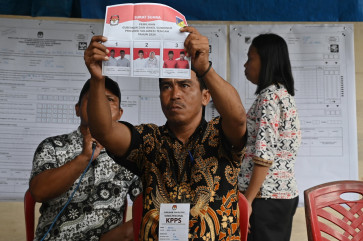Popular Reads
Top Results
Can't find what you're looking for?
View all search resultsPopular Reads
Top Results
Can't find what you're looking for?
View all search resultsInteresting facts about your in-flight meals
Are you curious about how airline meals are actually made? Here is some behind-the-scenes information of in-flight meals you may find interesting.
Change text size
Gift Premium Articles
to Anyone
When you are on board a plane, do you ever wonder where your omelette, chicken rice or other in-flight meals come from?
The Jakarta Post recently paid a visit to Aerofood ACS in Soekarno-Hatta International Airport (SHIA) in Tangerang, which focuses its business on in-flight and industrial catering services in Indonesia. Operating since 1974, the company is part of national flag carrier Garuda Indonesia’s subsidiary company Aerowisata Group.
For the in-flight catering business, Garuda Indonesia is Aerofood ACS' largest customer with up to 180 flights departing from SHIA every day. “We also handle [daily in-flight catering for] 30-35 flights from 18 foreign airlines in SHIA,” said the company's general manager Marwanto.
Are you curious about how airline meals are actually made? Here is some behind-the-scenes information of in-flight meals you may find interesting.
Cook, chill and serve
Working around the clock, Aerofood ACS' operation is divided into three shifts. Preparation time depends on the flight schedule. “For example, if the flight is at 6 a.m., then the preparation time should be 12-18 hours before the flight,” said Aerofood ACS marketing communication head Wulandari, adding that in terms of concept, it is basically “cook, chill, and serve”.
The preparation begins with processing raw materials outsourced from selected suppliers. After being sorted, the materials are processed depending on the airlines’ requests. For example, fruit cutting can differ between carriers. “If [the airlines] wants [their fruit] cut a certain way, we need to follow their request,” said Wulandari. “There’s also an airline that wants the cut fruit to weigh 15 or 20 grams, but it still has to fit into the bowl.”
(Read also: Sipping smooth coffee in Manggar's legendary Warung Kopi Anui)
 Working around the clock, Aerofood ACS' operations are divided into three shifts. (JP/Wienda Parwitasari)
Working around the clock, Aerofood ACS' operations are divided into three shifts. (JP/Wienda Parwitasari)
A (very) long journey
After being cooked, the meals enter a blast chilling area where its temperature is drastically decreased to -10 degrees Celsius for a maximum of four hours. “This aims to postpone the bacteria’s growth,” said the firm's quality assurance officer Regi. If these meals are not being stored in the required temperature, they will all be discarded.
When the blast chilling process is done, the foods are put into a chiller where they are separated based on their types, such as poultry and fruits. Up next is a dishing process, in which the meals are arranged in such a way according to the "golden sample" that shows how it ideally should appear in front of passengers. Afterward, the food is returned to the chiller until the employees take it to be arranged once again.
After this process, the meals are kept in a loading room for a minimum of three hours prior to the flight, where a high-lift truck will later pick it up to be delivered to the aircraft. Airline crews will later warm the food before serving it.
The President's favorite foods
In-flight meals for President Joko "Jokowi" Widodo and Vice President Jusuf Kalla are also prepared by the company. There is a special locked rack for VVIP passengers. Jokowi, for instance, has been known to prefer vitamin water, peyek (crackers), chocolate milk, ginger-flavored beverages, sambal (chili), tempe crackers, nuts and dodol (fudge-like sweet made from glutinous rice).
There is a dedicated team that handles the President and Vice President’s food. Their meals require several steps before being served on the flight, such as sample-tasting by presidential security and lab-testing to ensure the food is safe and free from bacteria.
 Preparation time of in-flight meals depends on the flight schedule. (JP/Wienda Parwitasari)
Preparation time of in-flight meals depends on the flight schedule. (JP/Wienda Parwitasari)
Where do the wines go?
International flights, especially in First Class, often include alcoholic beverages on their menus, such as wine, liquor and champagne. However, once it reaches Indonesia, these items must be destroyed. “They are considered imported items that are prohibited to be circulated in Indonesia,” said Wulandari.
This destroying process has to be witnessed by customs officers and photos are also taken for proof. It does not matter if the bottle is still full - as long as its seal is broken, it has to be discarded.
No MSG
Meals in Aerofood ACS do not contain monosodium glutamate (MSG). “We only use general seasonings, such as salt, sugar, pepper and stock,” said Wulandari, adding that they also do not use any preservatives. “We preserve our meals by setting the temperature accordingly."
(Read also: Sampling healthy menus crafted by nutritionists in Jakarta)
 A long journey is needed for the warm omelette dish and other in-flight meals to reach the passengers.(shutterstock.com/Sorbis/File)
A long journey is needed for the warm omelette dish and other in-flight meals to reach the passengers.(shutterstock.com/Sorbis/File)
In search for authentic taste
In order to achieve an authentic taste, Aerofood ACS provides separate kitchen stations for Japanese, Korean, Chinese and Arabic foods. Each is handled by foreign chefs from Japan, Korea, Hong Kong, India and Europe to ensure flavor authenticity.
The company also maintains quality by carrying out random meal checks every day. After tasting various foods together with customer relations and catering control persons, the food is given a rating. Sometimes airline representatives are invited to join this process.
Tasteless in-flight meals
In-flight meals are known to be bland when consumed in the sky. As opposed to an actual lack of seasoning, it is the lack of humidity, lower air pressure and background noise that has led to the perception that airplane food is poorly seasoned, according to BBC. Sense of smell is affected once you step into the cabin and, together with your taste buds, senses further weaken 30,000 feet in the air. But it reportedly only influences sweet and salty senses; not the sour, bitter and spicy ones.
However, this does not mean that in-flight meals have to be spicier in order to indulge passengers’ taste buds, as some prefer their meals without the heat. If you want to experience a kick to your dish, perhaps just ask the cabin crew for extra sambal. (kes)







